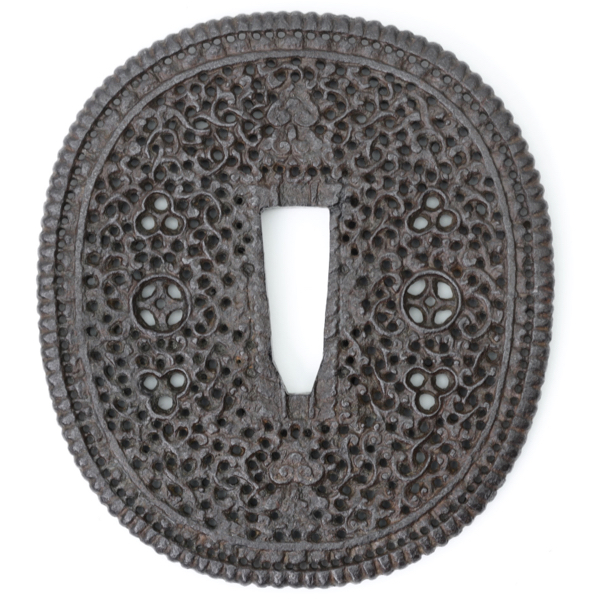
Very rare early kora
Complete with goatskin-covered scabbard with fine quill embroidery.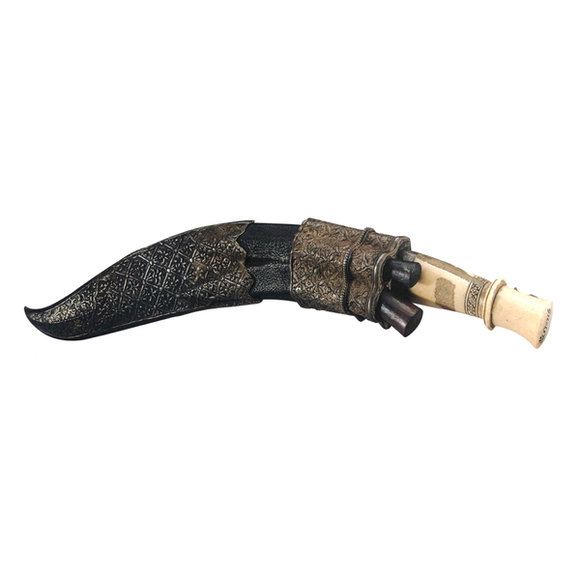
The Palace Museum khukurī
A very important early khukurī kept in the Palace Museum, Beijing.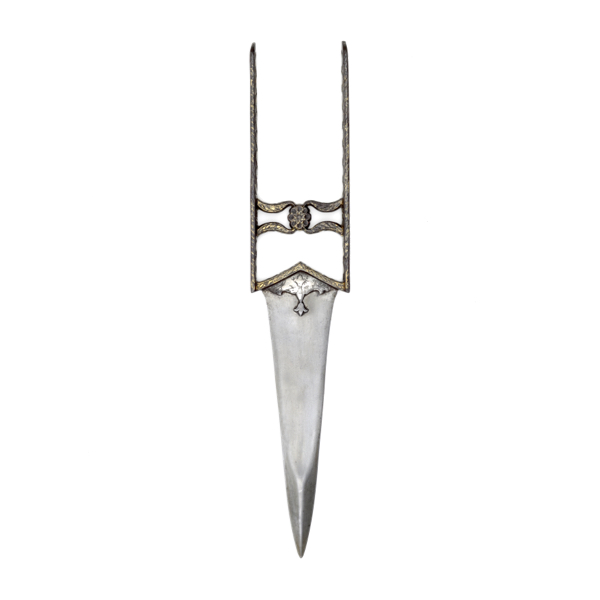
Northern katar
with laminated blade and chiseled hilt.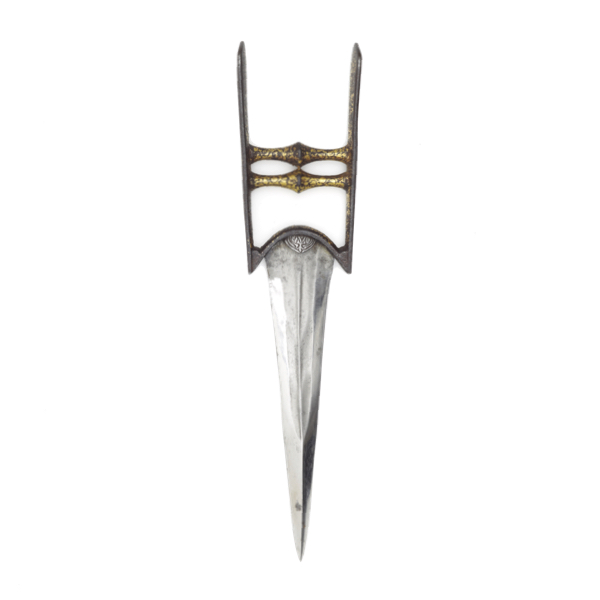
Katar from Kota, Rajasthan
Indian wootz blade and remains of floral gold overlay.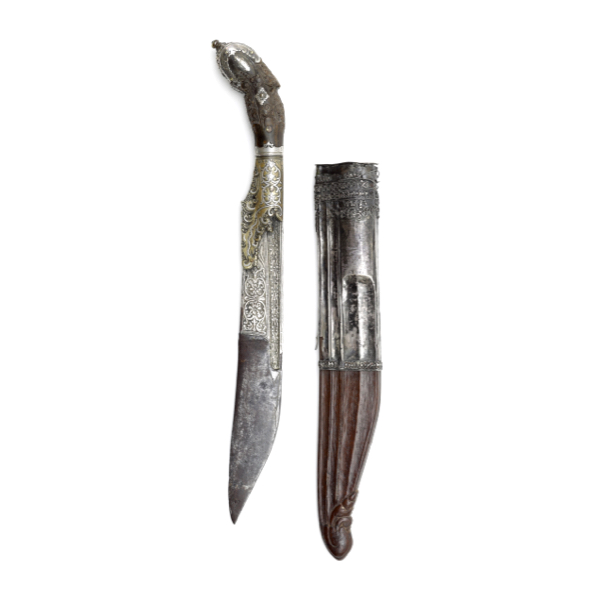
Sinhalese pihiya with scabbard
Introduction
Often called piha-kaetta, which are actually the chopper versions, these knives were ma
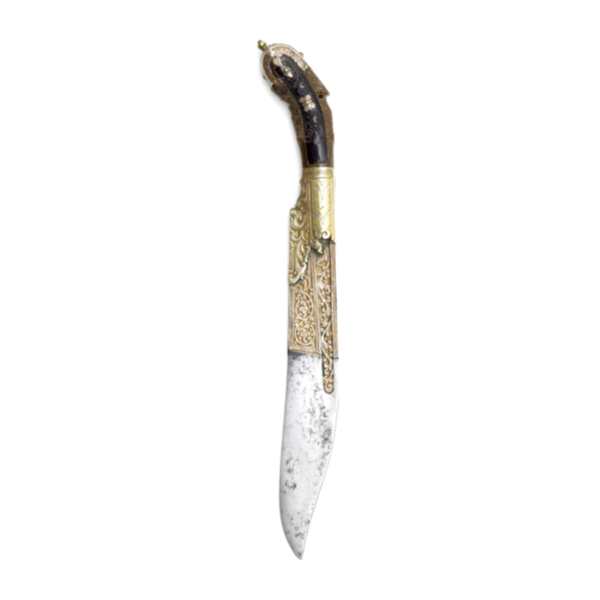
Gold alloy Sinhalese pihiya
Often called piha-kaetta, these knives were mainly made by the King's Workshops.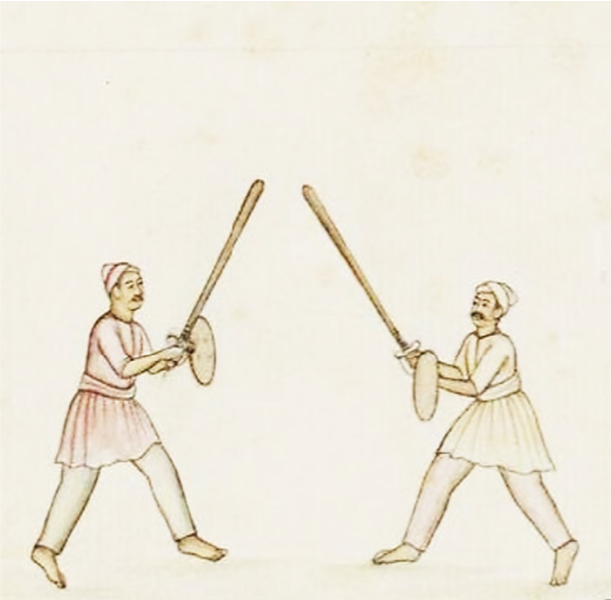
Martial activities in 18th-century Indian art
By Harjit Singh Sagoo
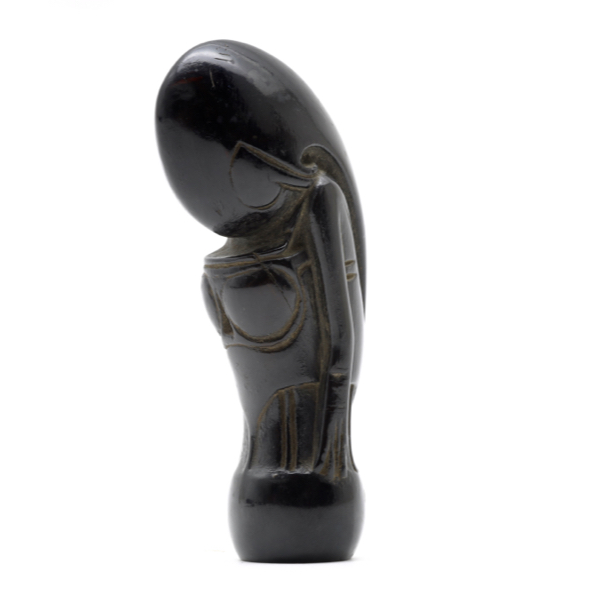
Hulu Radon / Hulu Balu Mekabun
Indonesian name for a keris hilt depicting a veiled woman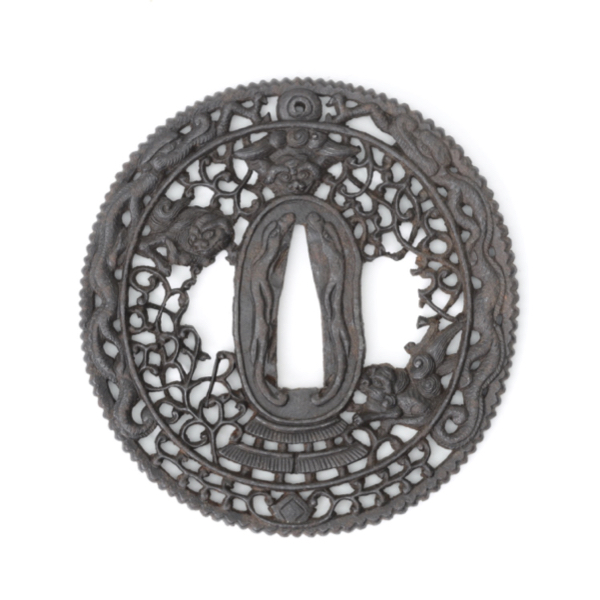
Fine pierced nanban tsuba
Very delicate work with carved guardian lions.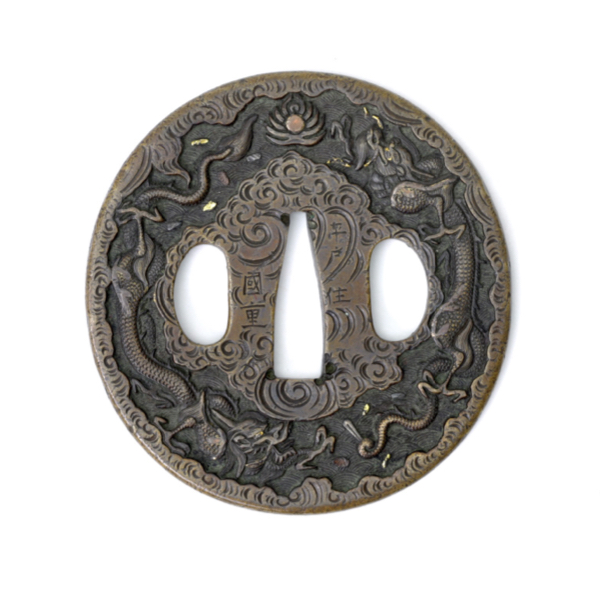
Hirado Kunishige tsuba
Of a copper alloy with a different shade on each side.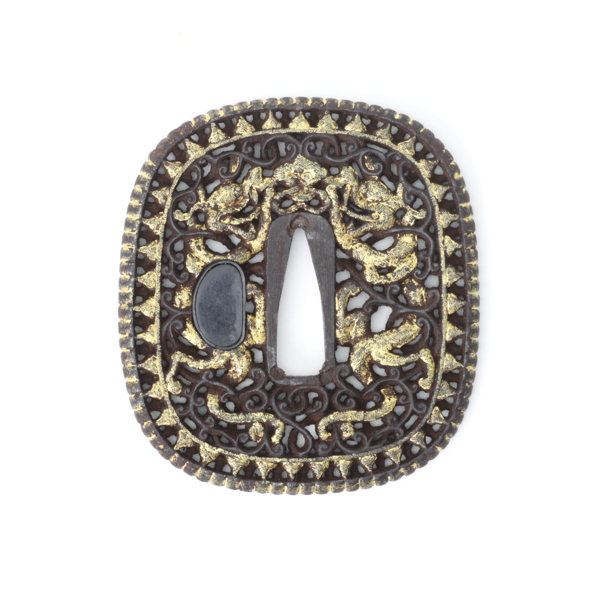
Small Chinese saber guard
Of pierced iron, elaborately cut with lotus petal border.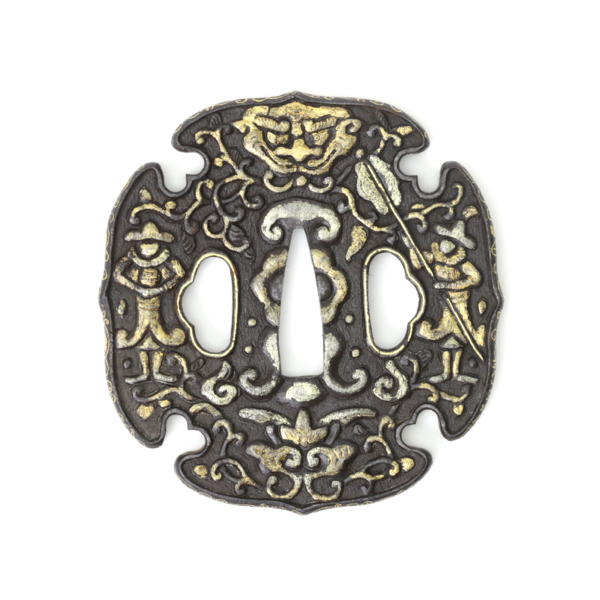
Thick Aoi gata tsuba with foreigners
With fine golden overlays, even on the thick rim.
Aoi-gata tsuba with foreigners
Unusual tsuba with foreign figures and Chinese auspicious symbols.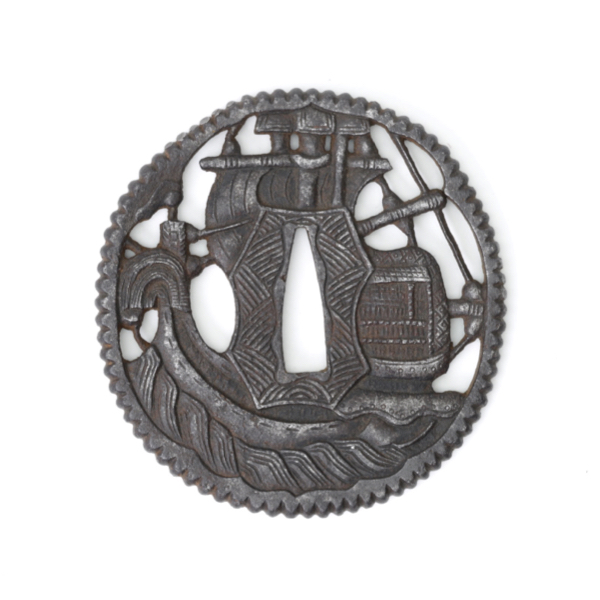
Iron nanban ship tsuba
Pierced and chiseled showing an 18th century European vessel.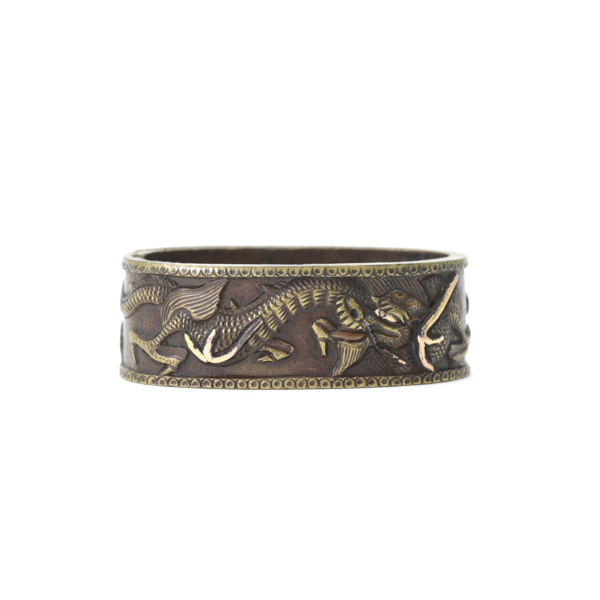
Hirado Kunishige fuchi
One of his classic designs, signed by the maker.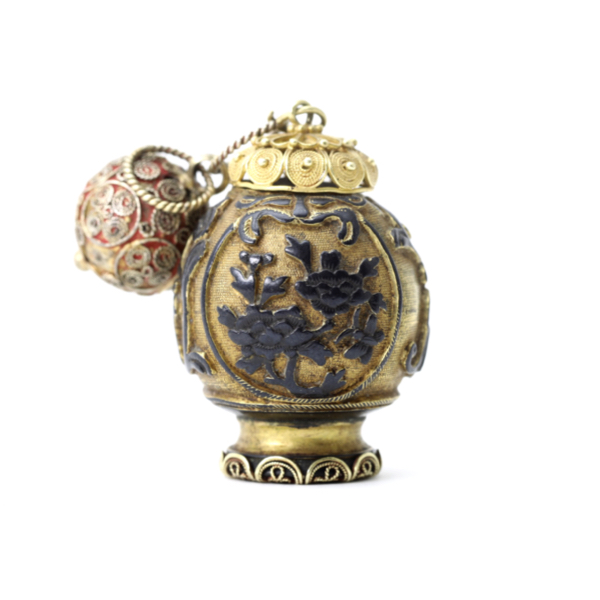
Sawasa smallsword pommel
Upgraded with filigree to resemble a snuff bottle.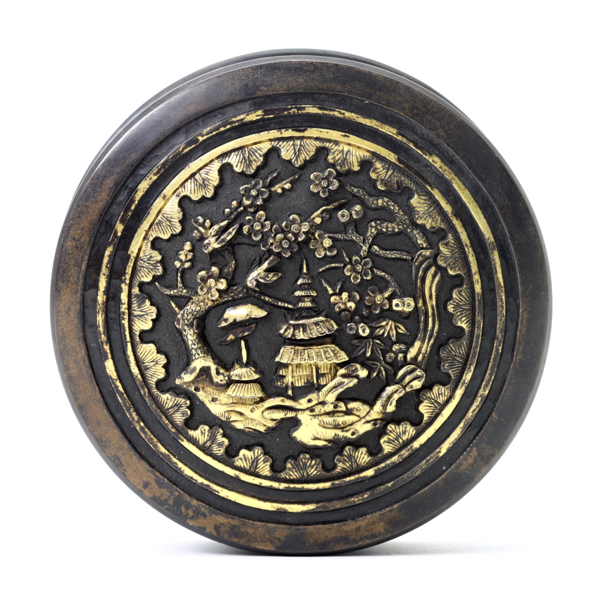
Sawasa east indian inkwell
Sawasa is metalware in black and gold made primarily for the Dutch expat community in Asia.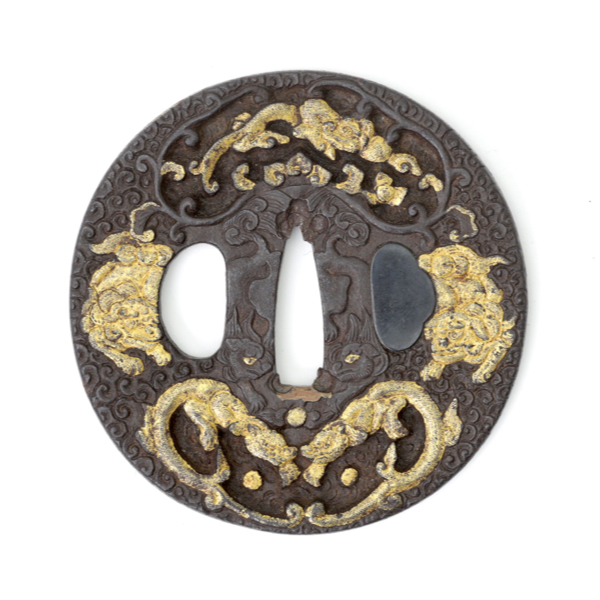
Unusual nanban tsuba
Very finely carved with designs reminiscent of export wares.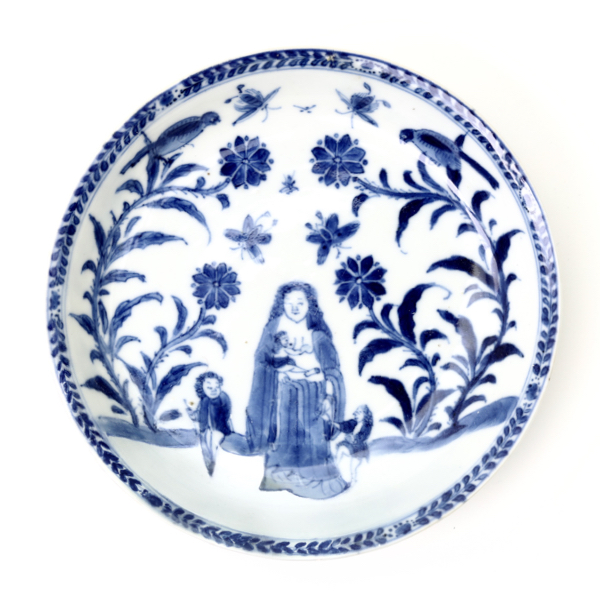
Chinese dish with lady mary and child
A rare early dish meant for a Christian market.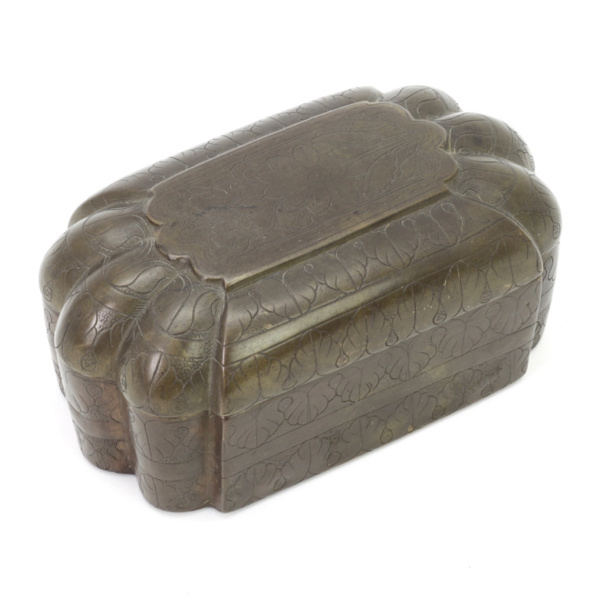
Indian betel box
Made of brass and bronze, now deeply patinated.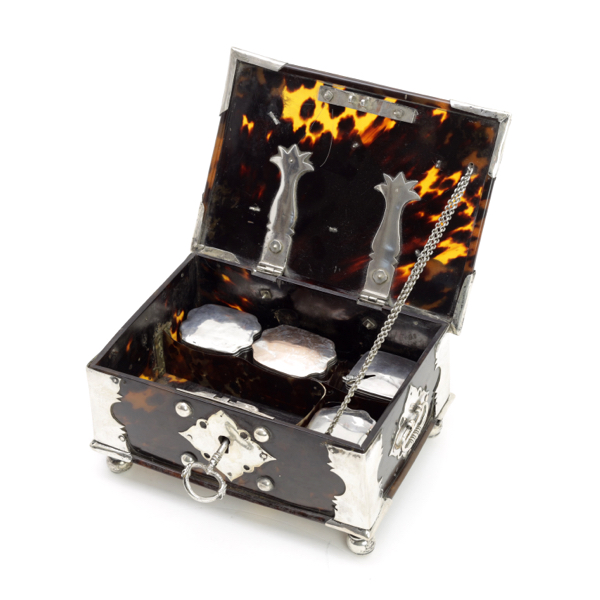
Dutch Colonial sirih box
Complete with key, inside divider and four silver containers.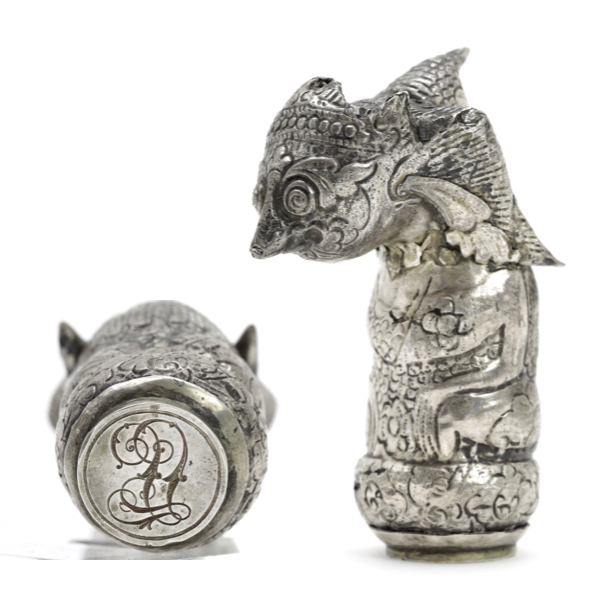
Nyamba keris hilt with seal
Rare old keris handle made into a European wax seal.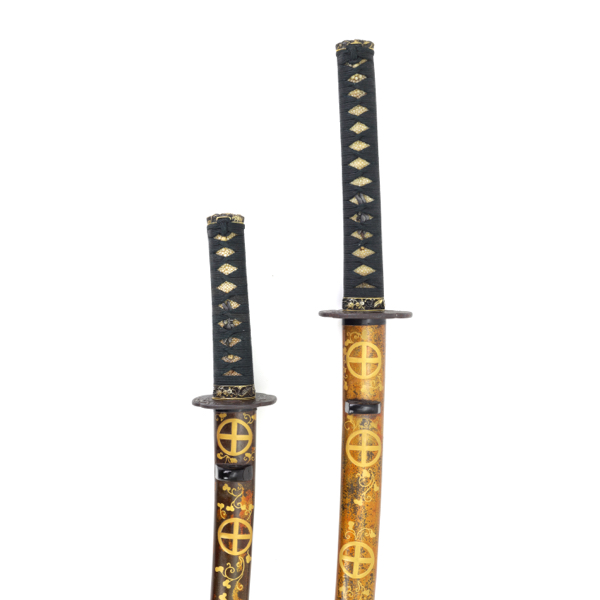
Shimazu mon daishō
A pair of daishō with blades forged by the Takada smiths of Bungo in the north of Kyūshū.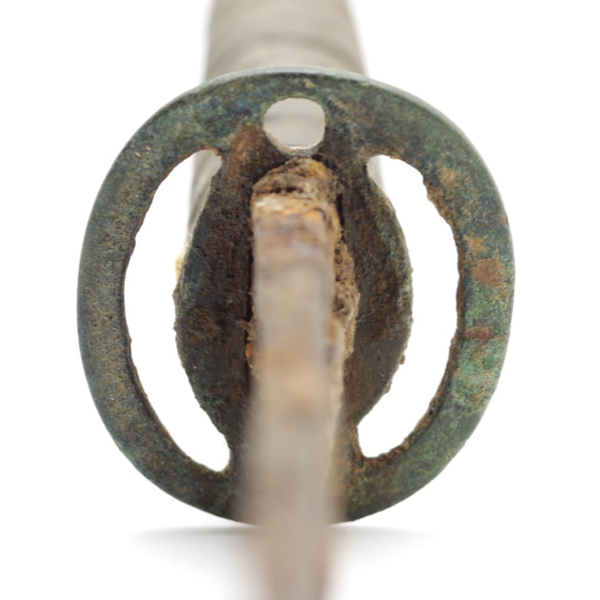
SE Asian dha with "Musashi tsuba"
In excavated condition, with copper alloy hilt.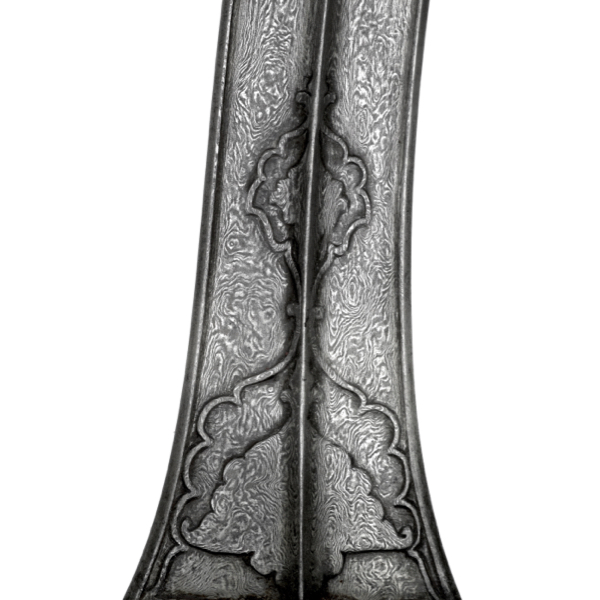
Fine wootz khanjar
With early blade of "brilliant black" wootz.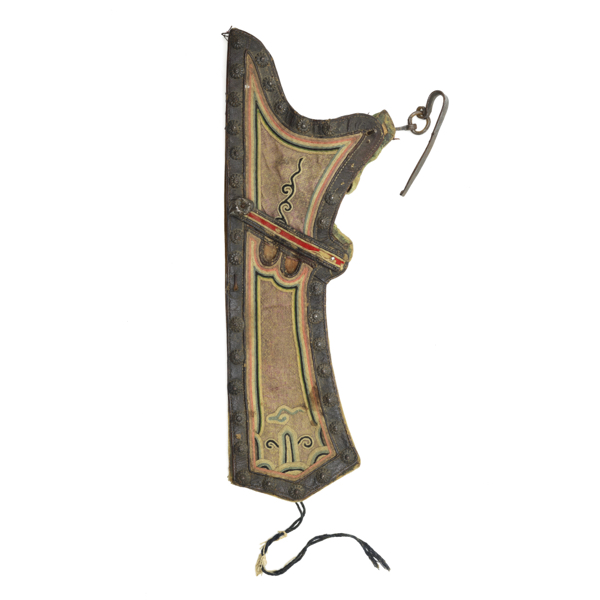
Broken Tibetan quiver
A once fine example that had a bit of a rough life.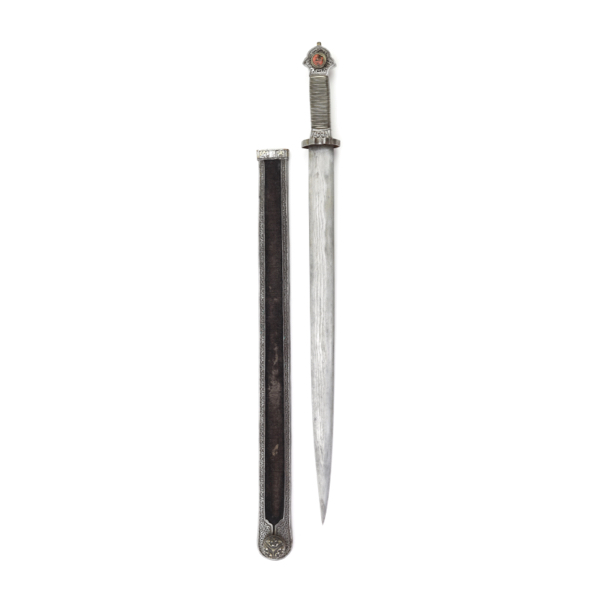
Silver overlaid Tibetan shortsword
With a rare, finely forged double hairpin blade.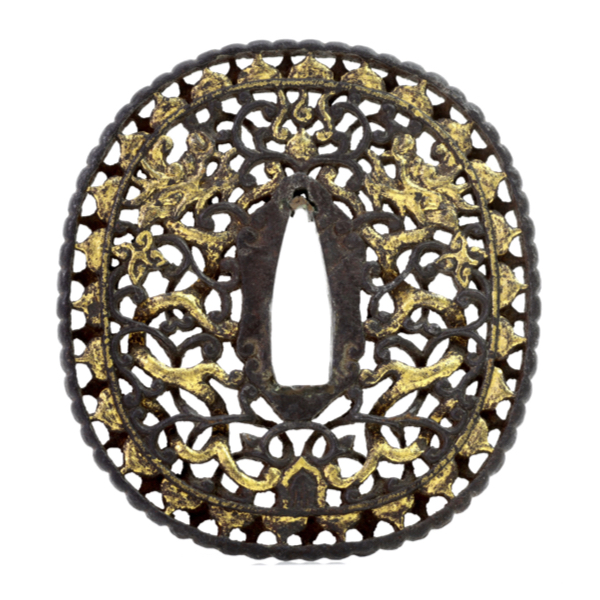
Southern Chinese openwork sword guard
In the style of northern work of the 16th and 17th centuries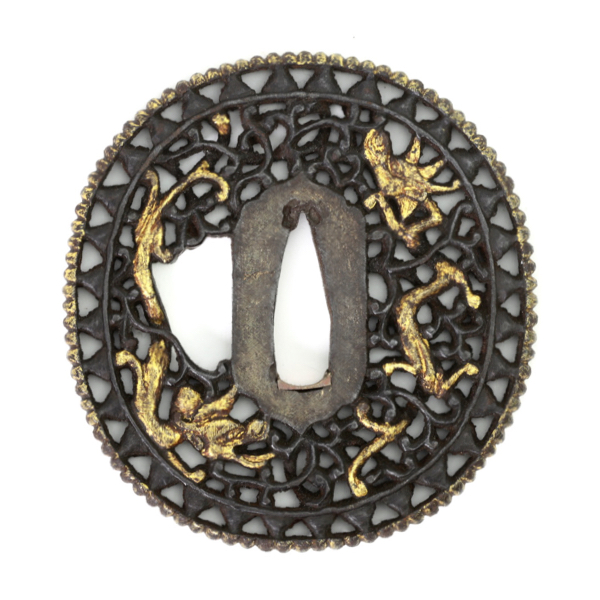
Assymetric dragon tsuba
Chinese work for the Japanese market.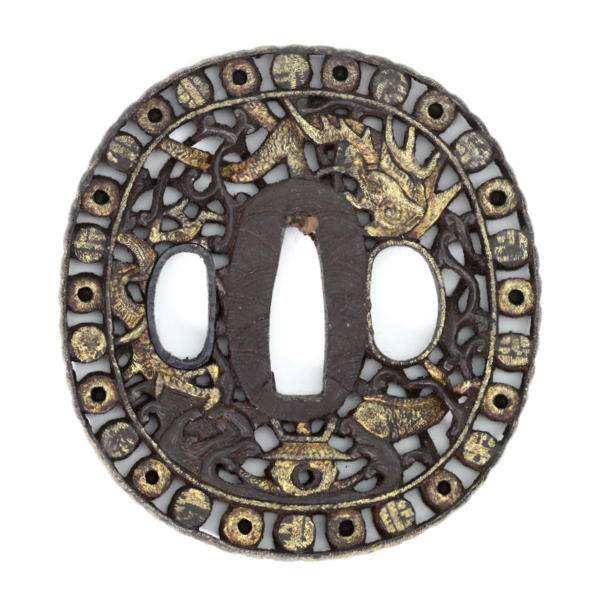
Canton tsuba with 28 "jewels"
Canton work for the Japanese market, with 28 metal balls in separate compartments.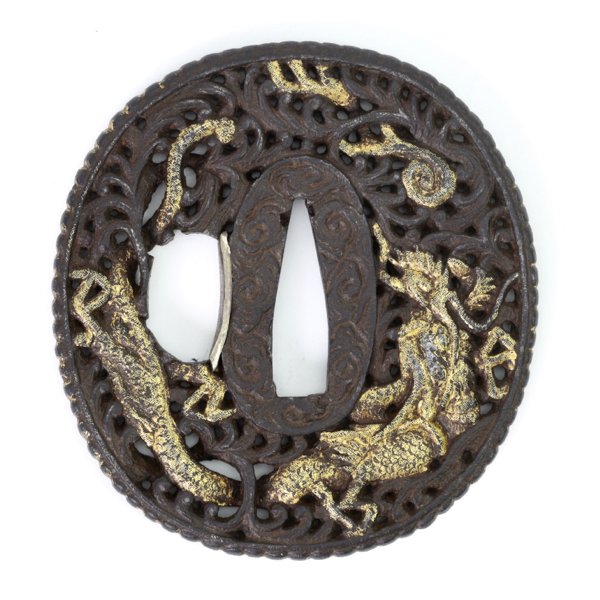
Early Canton tsuba
Made in Canton, China, for the Japanese market.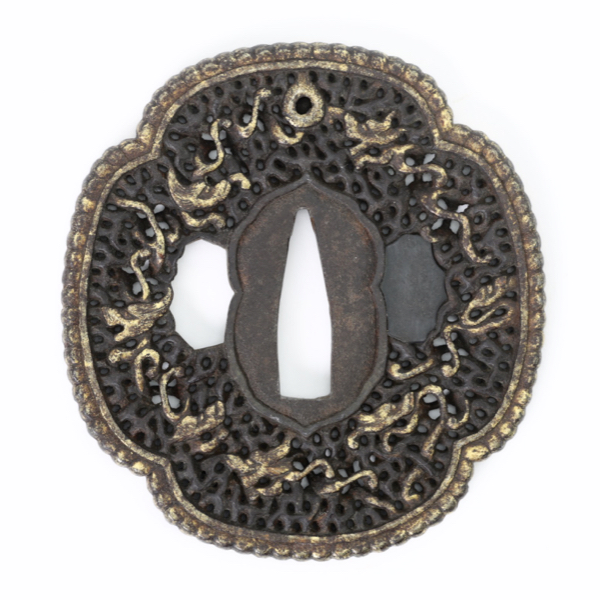
Lobed Canton tsuba
Made in Canton, China, for the Japanese market.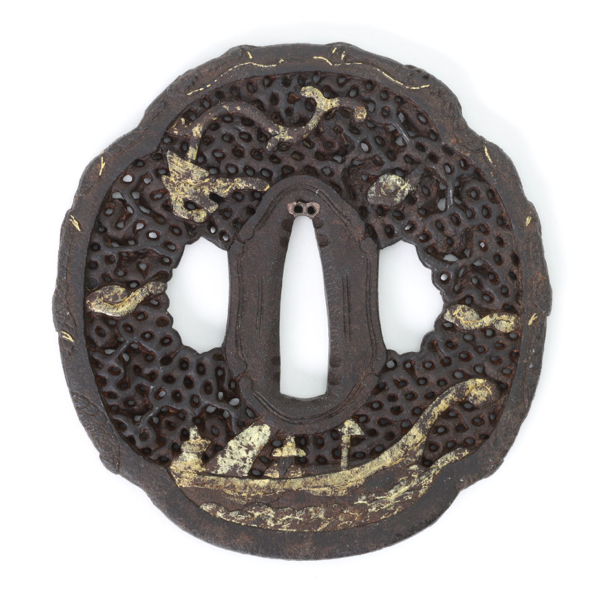
Canton tsuba with ship
Made in Canton, China, for the Japanese market.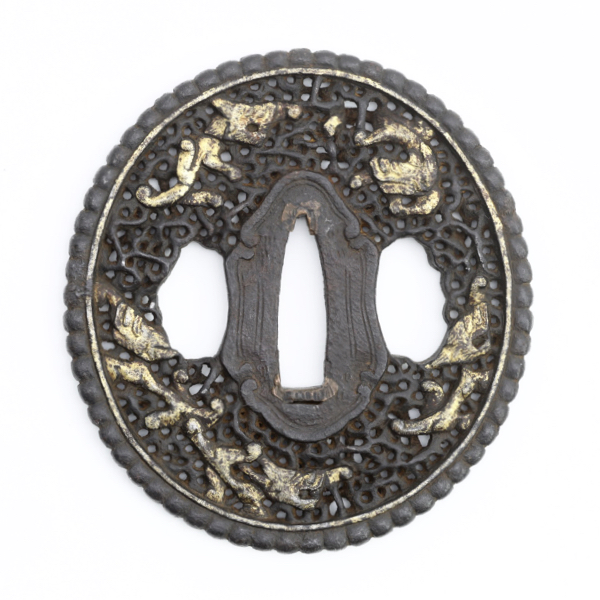
Five dragon Canton tsuba
Made in Canton, China, for the Japanese market.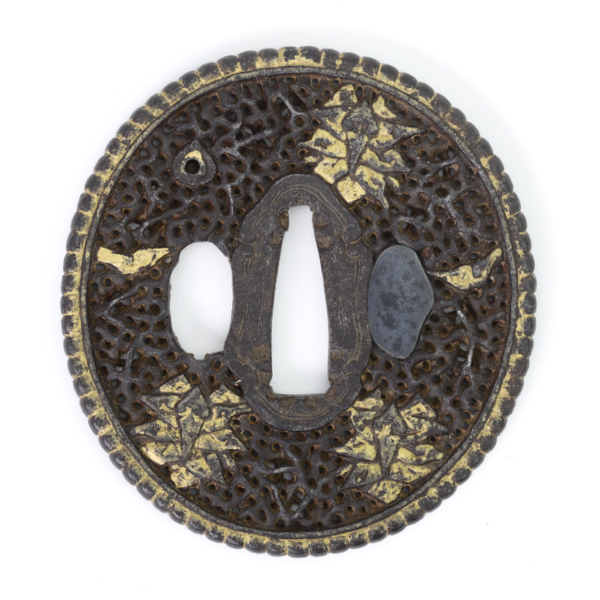
Water caltrop Canton tsuba
Made in Canton, China, for the Japanese market.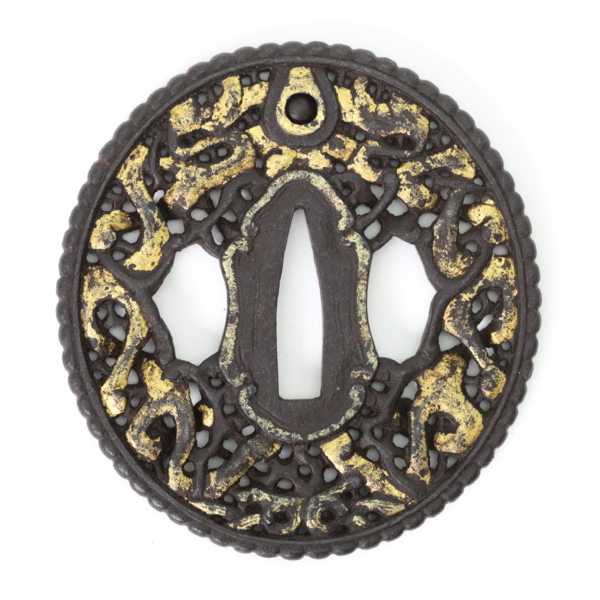
Facing dragon Canton tsuba
Made in Canton, China, for the Japanese market.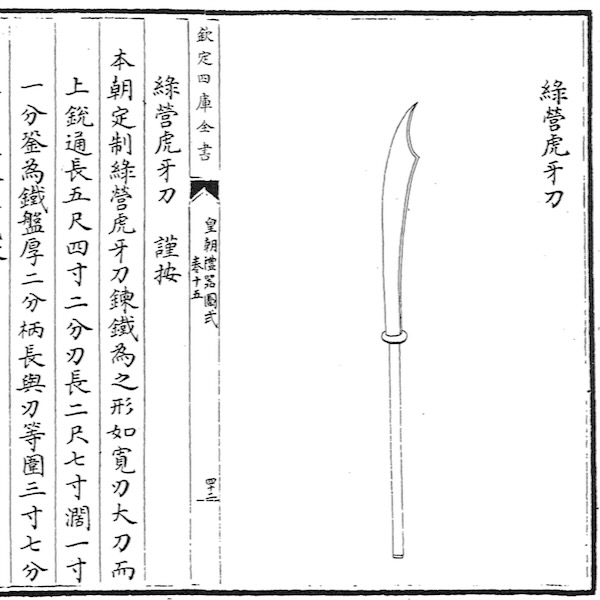
Hǔyádāo (虎牙刀), "tiger tooth sword"
Mandarin name of a Chinese-edged weapon with a 1:1 hilt-blade ratio.Heavy armor piercing katar
With a narrow blade of impressive thickness. Attributable to the Bundelkhand area.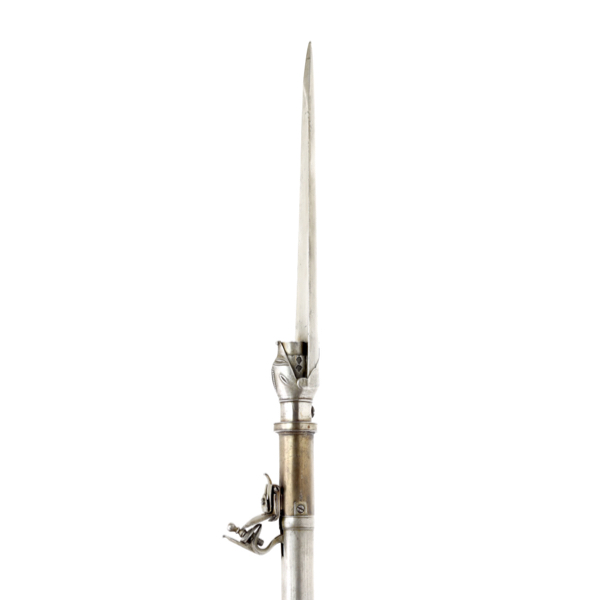
Flintlock lance
A what? Yes exactly. An extremely rare piece, the only example I am aware of in published collections at least.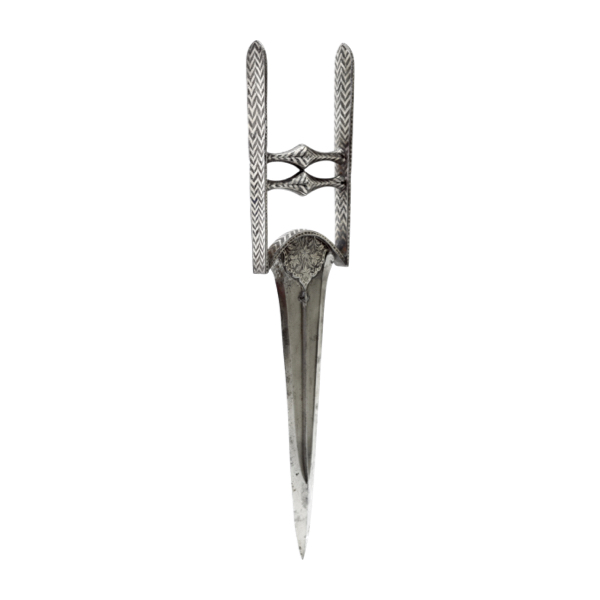
Silver chevron katar
All the designs being true inlay, with almost no losses.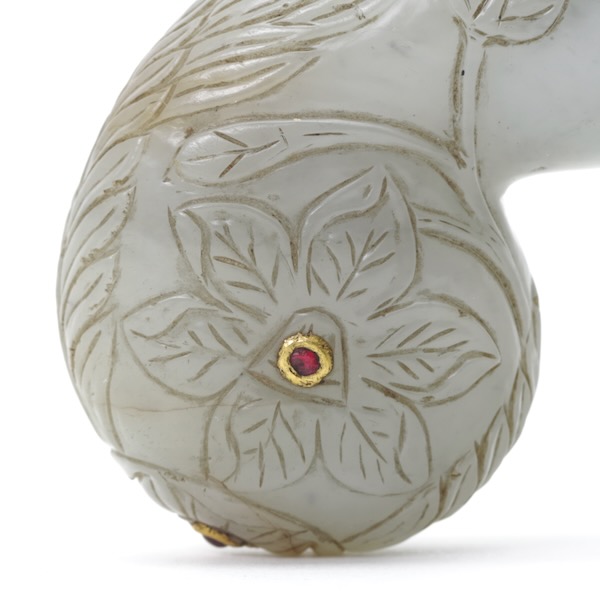
kundan (कुंदन)
It literally means "gold" but is also a technique for setting gems into brittle surfaces.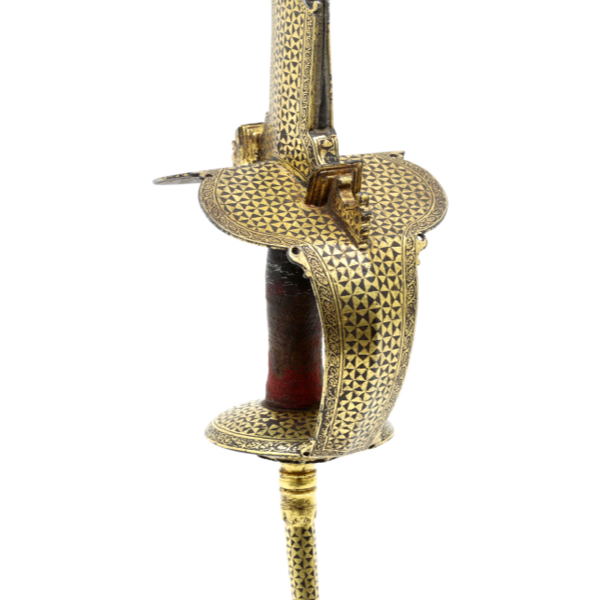
Firanghi with gold overlaid hilt
The manner of decoration is entirely geometrical, which is very hard to do right.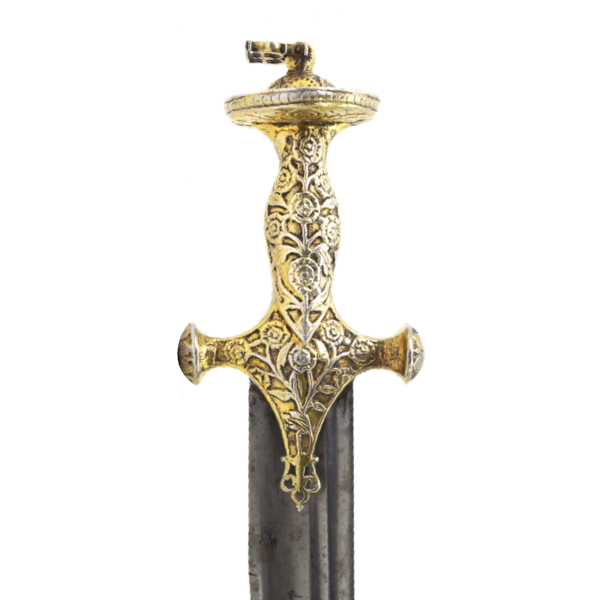
A Fraser talwar from the Deccan
Once belonging to William Fraser (1784-1835), a British civil servant.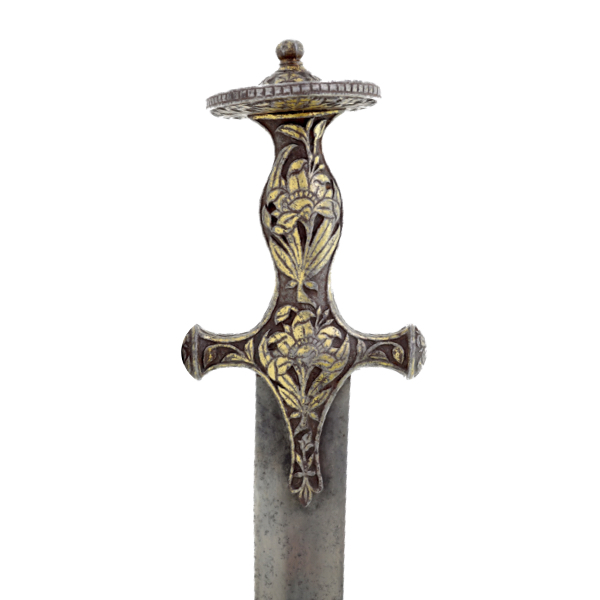
A Fraser talwar, 18th century
Once belonging to William Fraser (1784-1835), a British civil servant.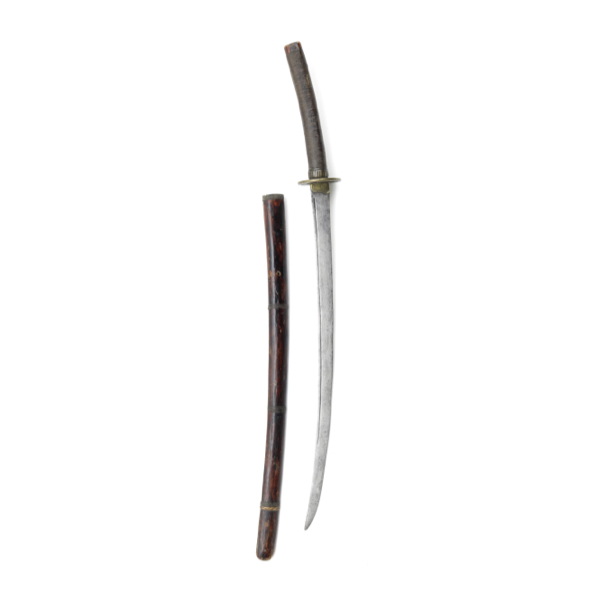
Japanese inspired Asian sword
Inspired by uchigatana brought into Vietnam by Japanese refugees who settled along the coast.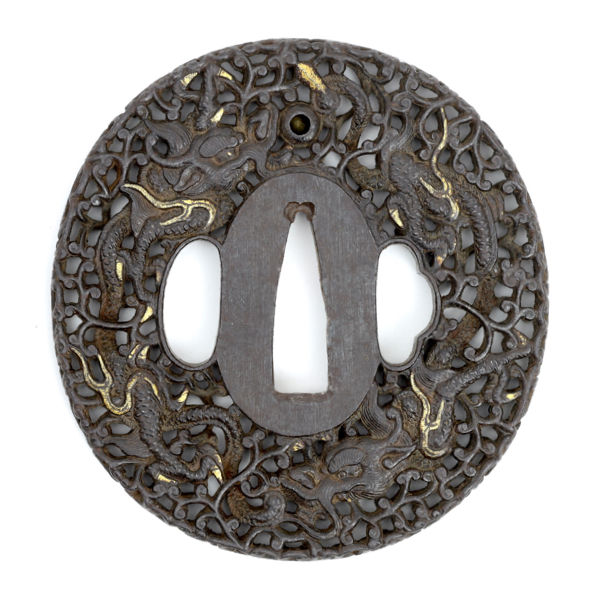
Yagami school nanban tsuba
A masterpiece of the genre. The Yagami school were excellent carvers of iron.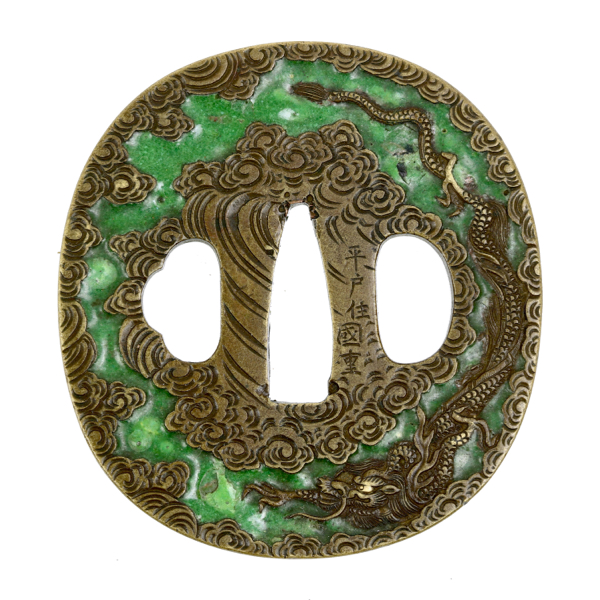
Enamelled Hirado Kunishige tsuba
Fine work and one of the very few enamelled tsuba by this maker.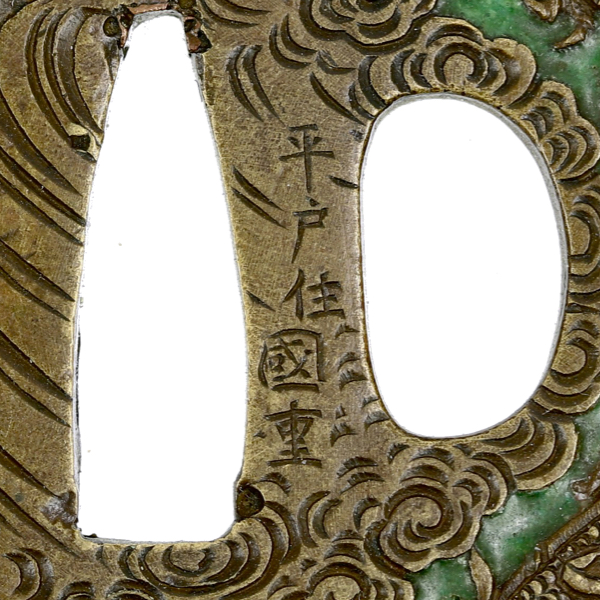
Hirado Kunishige (平戸市國重)
A group of Japanese sword fitting makers working on the island of Hirado.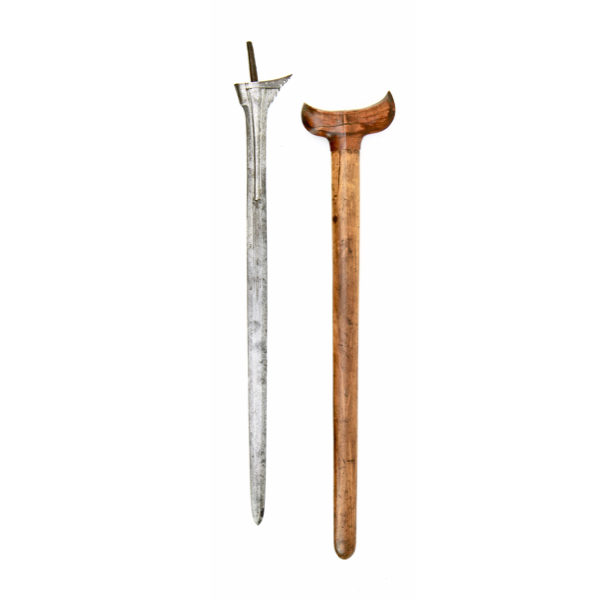
European sword blade keris
In the style of a Malay keris panjang.